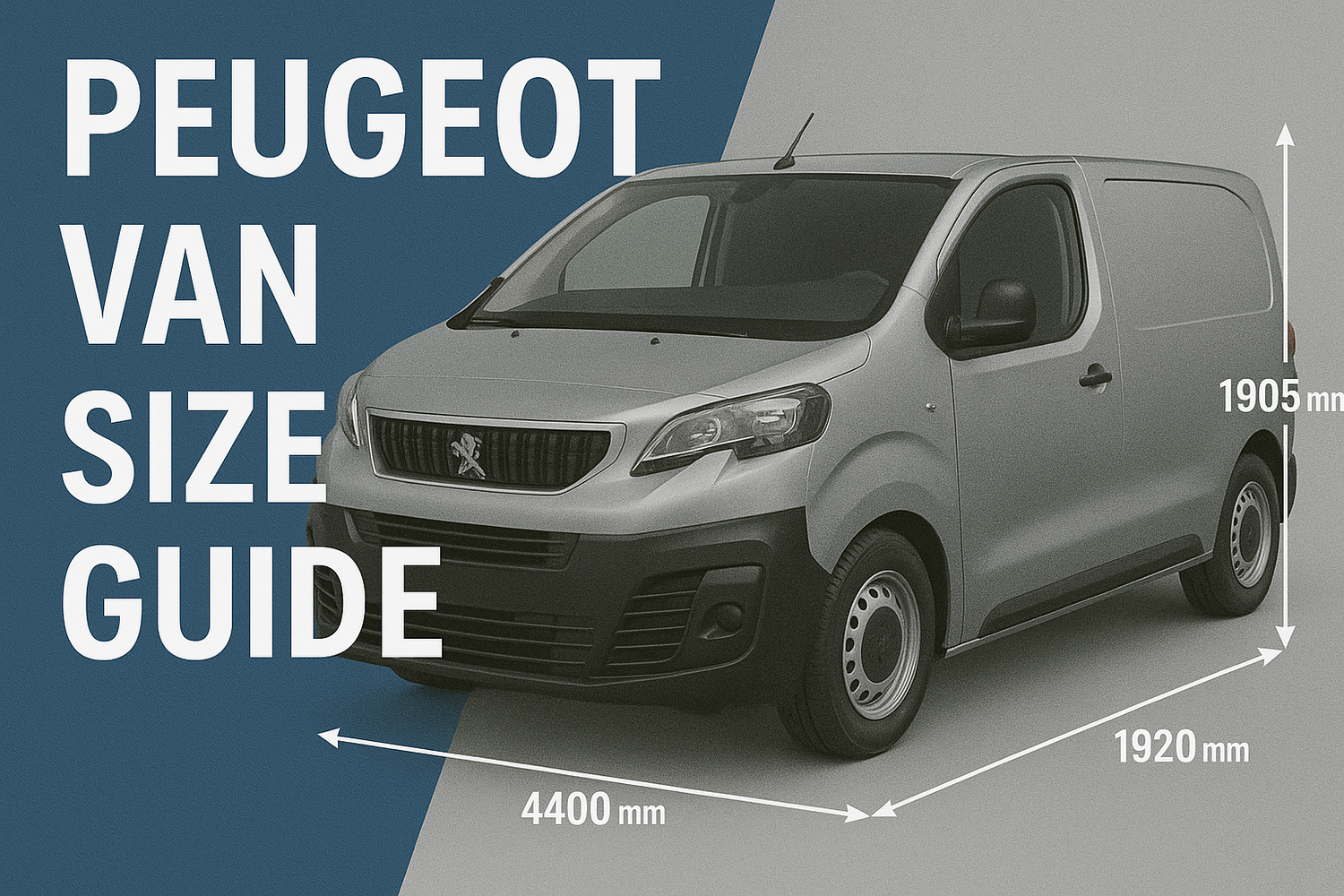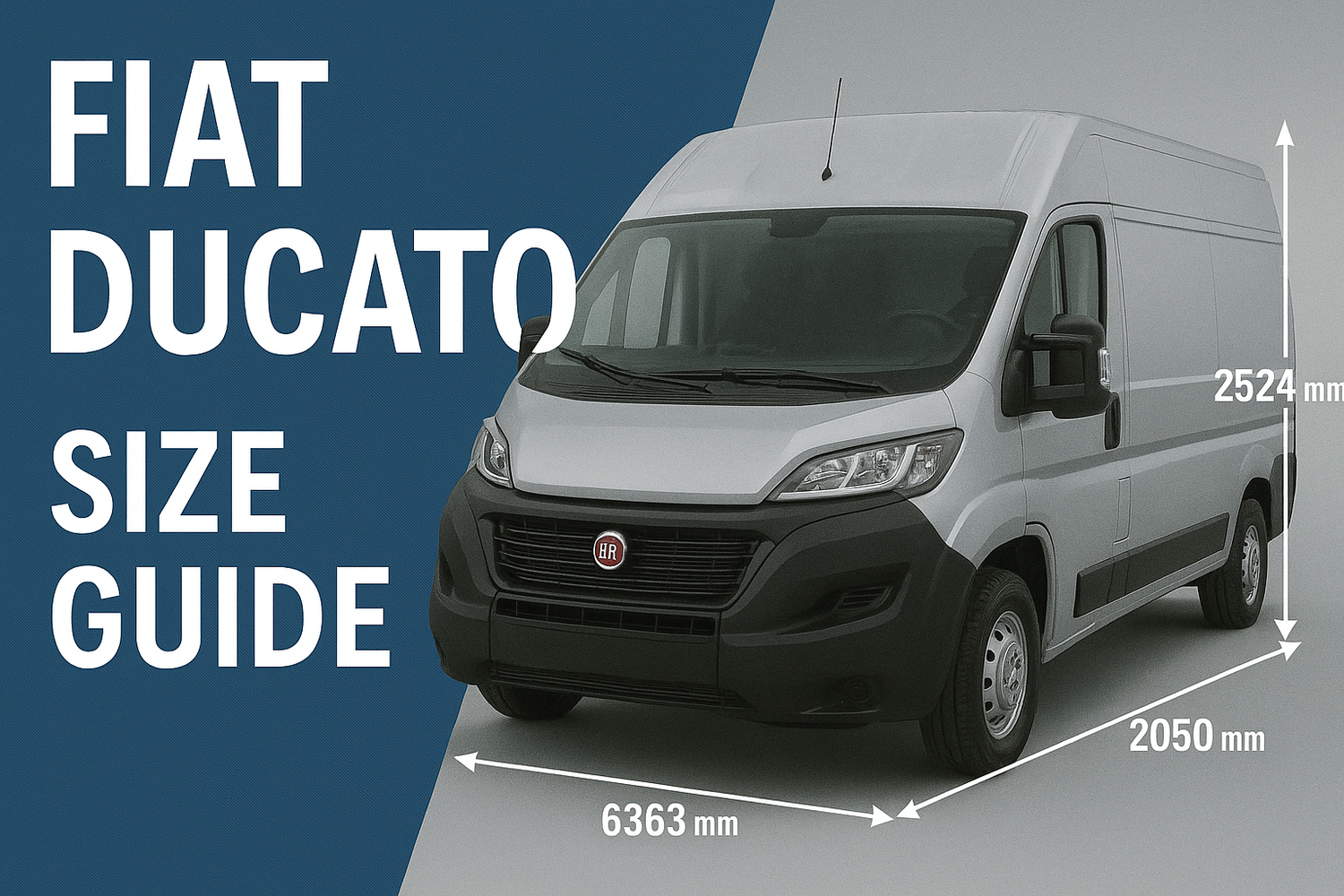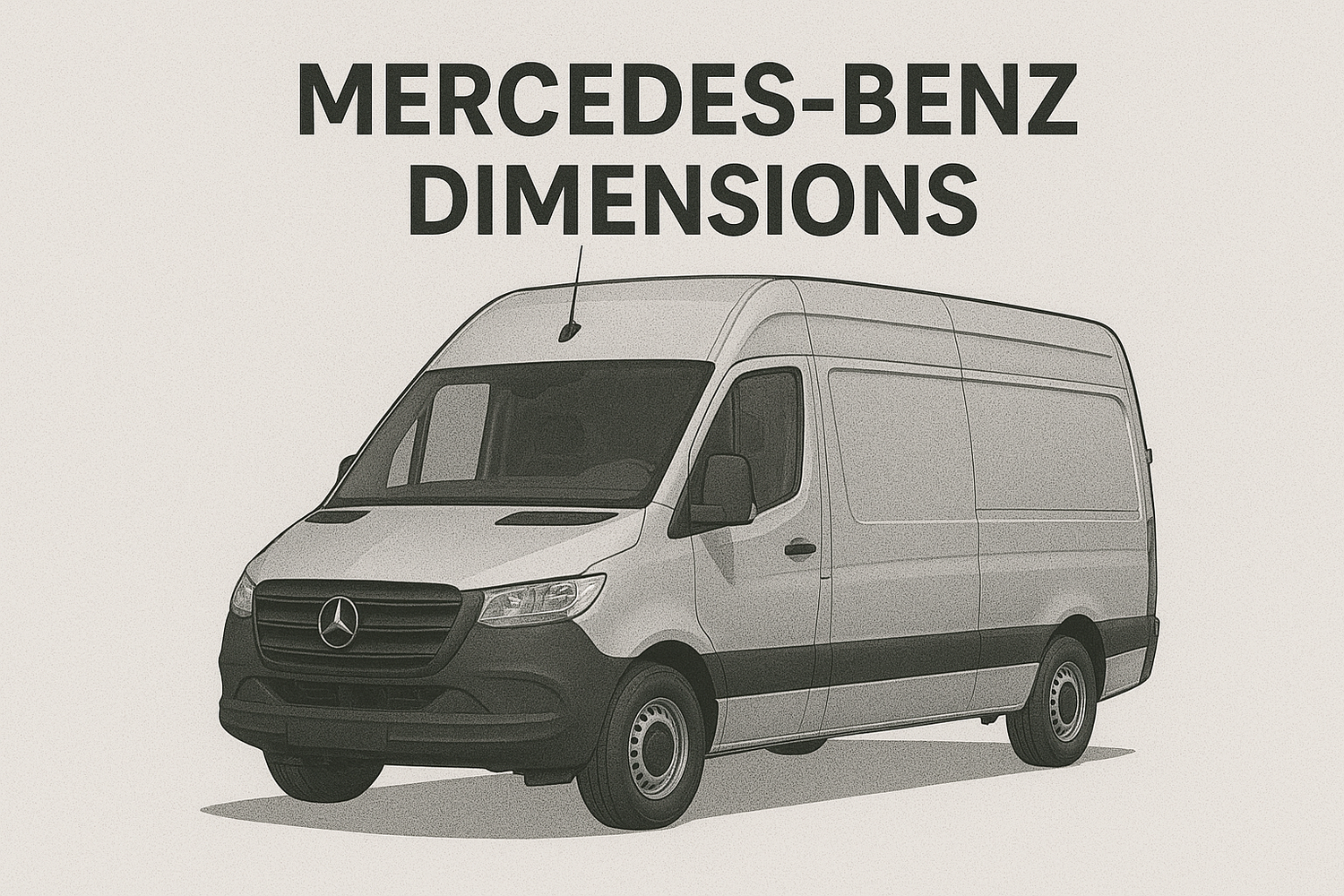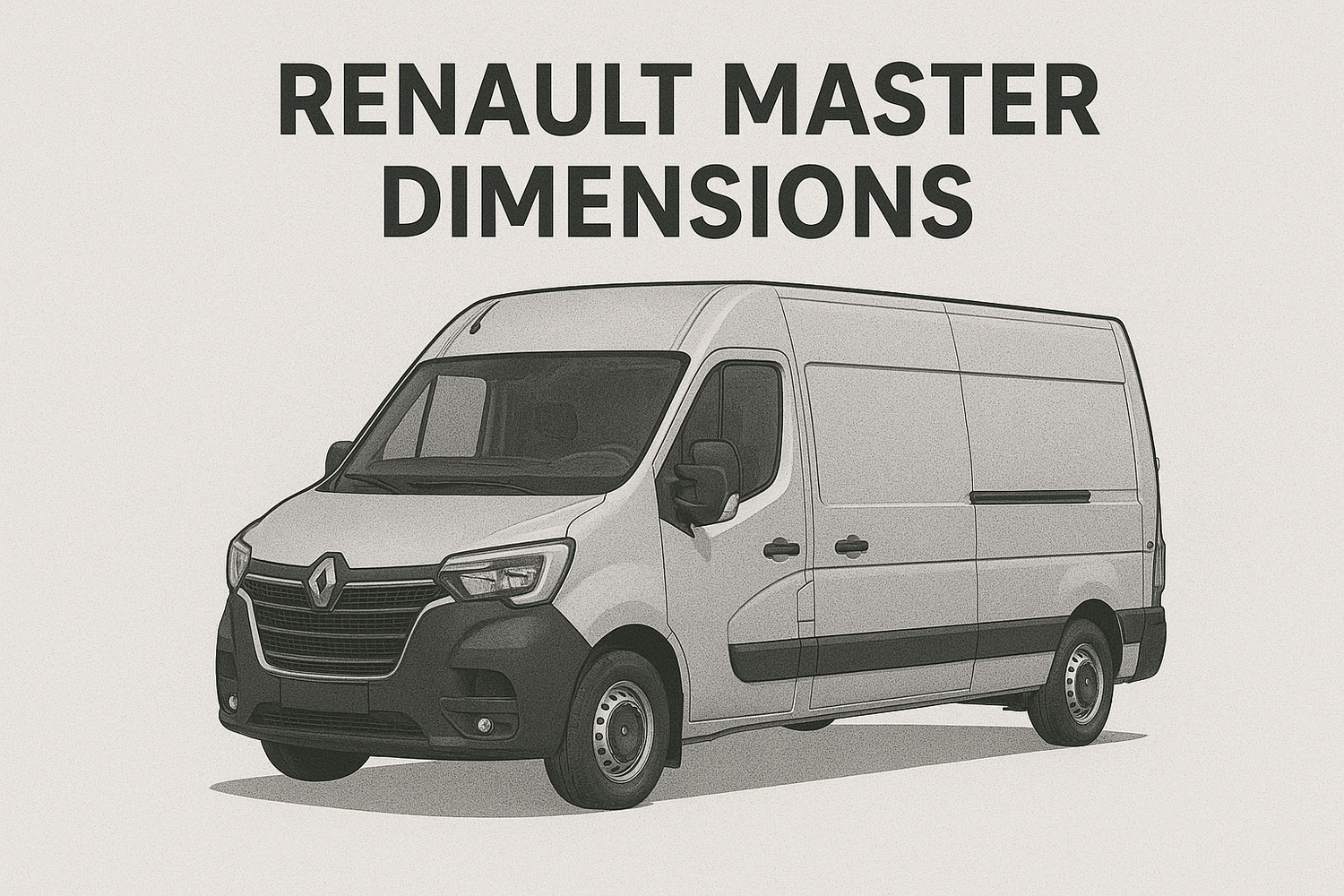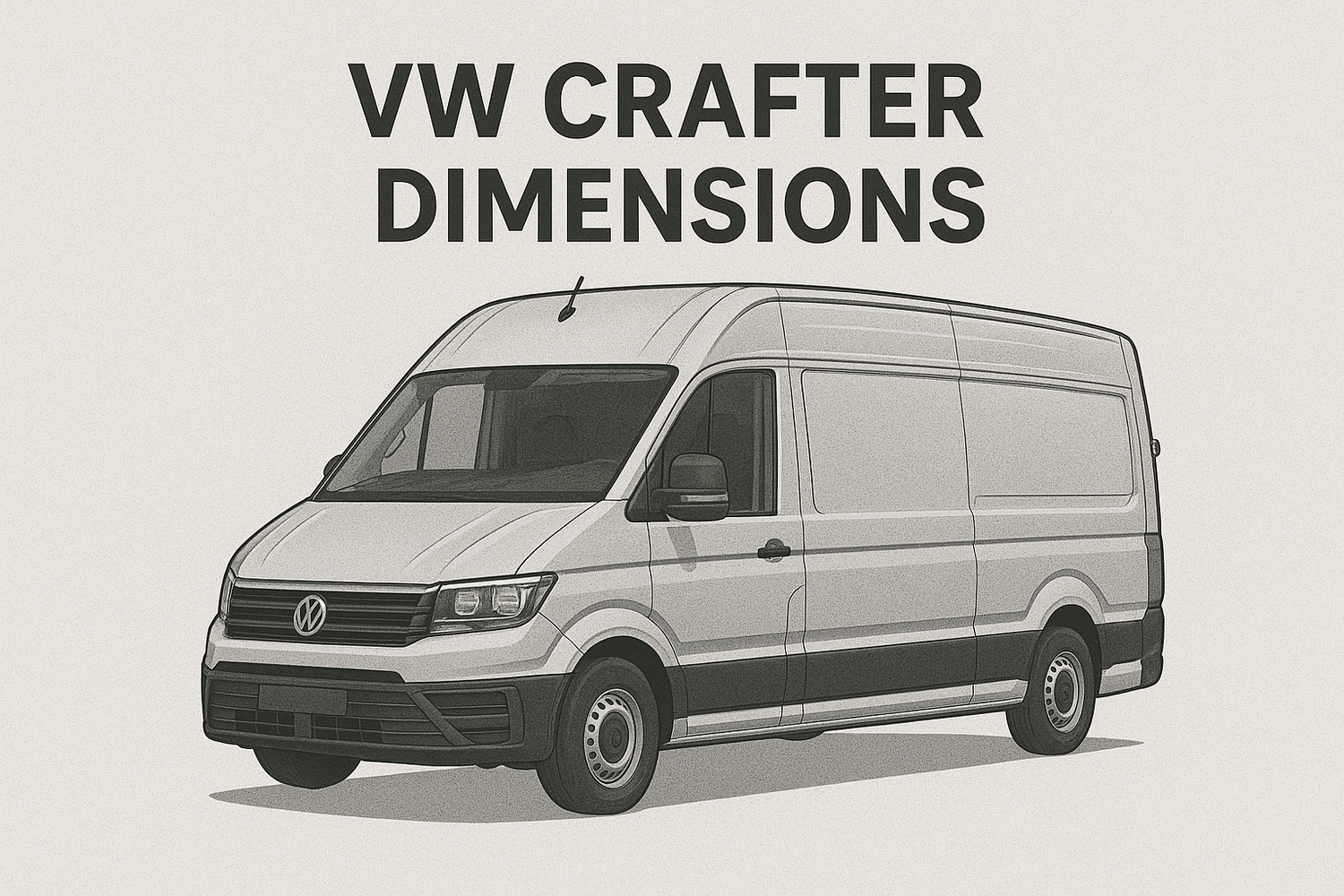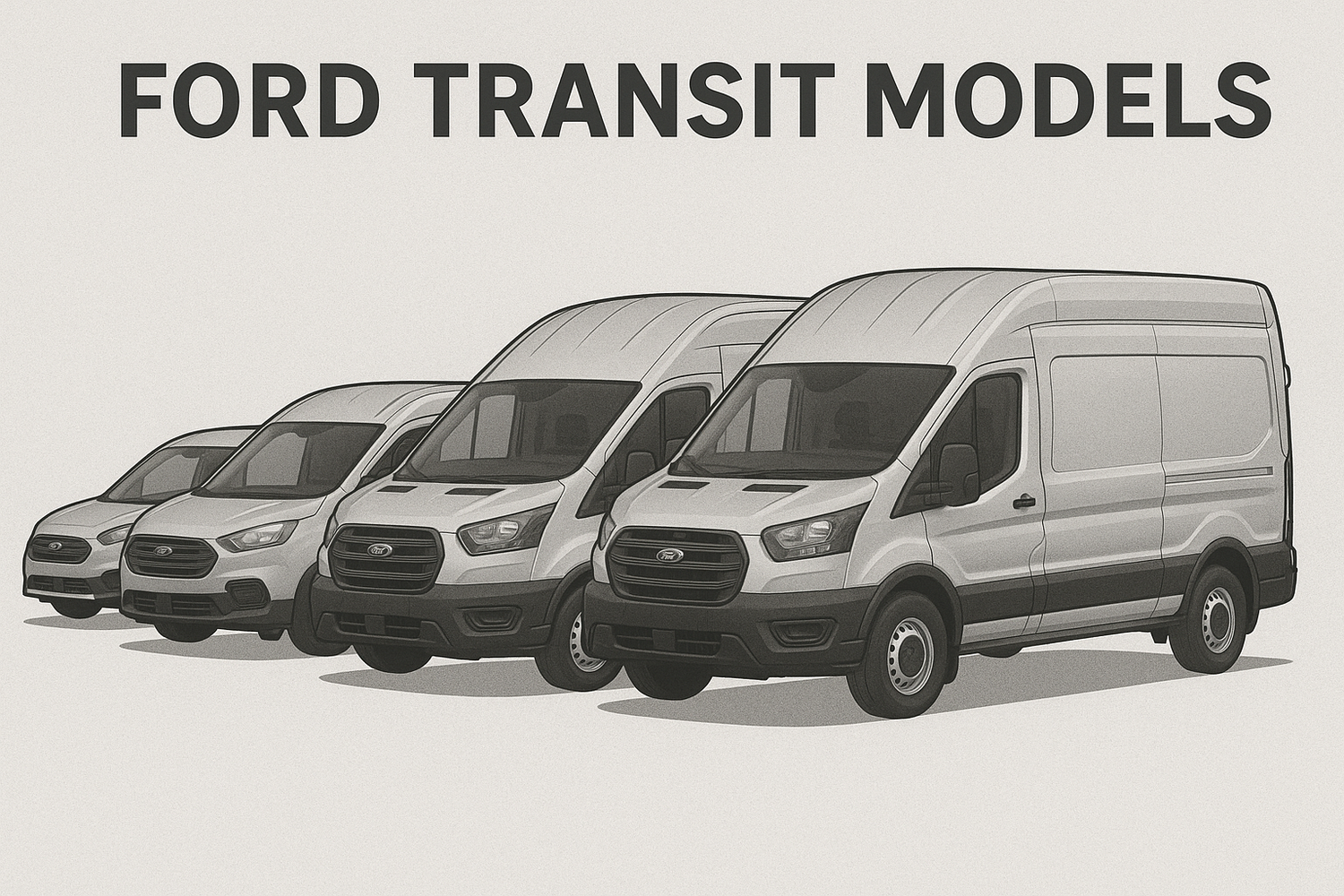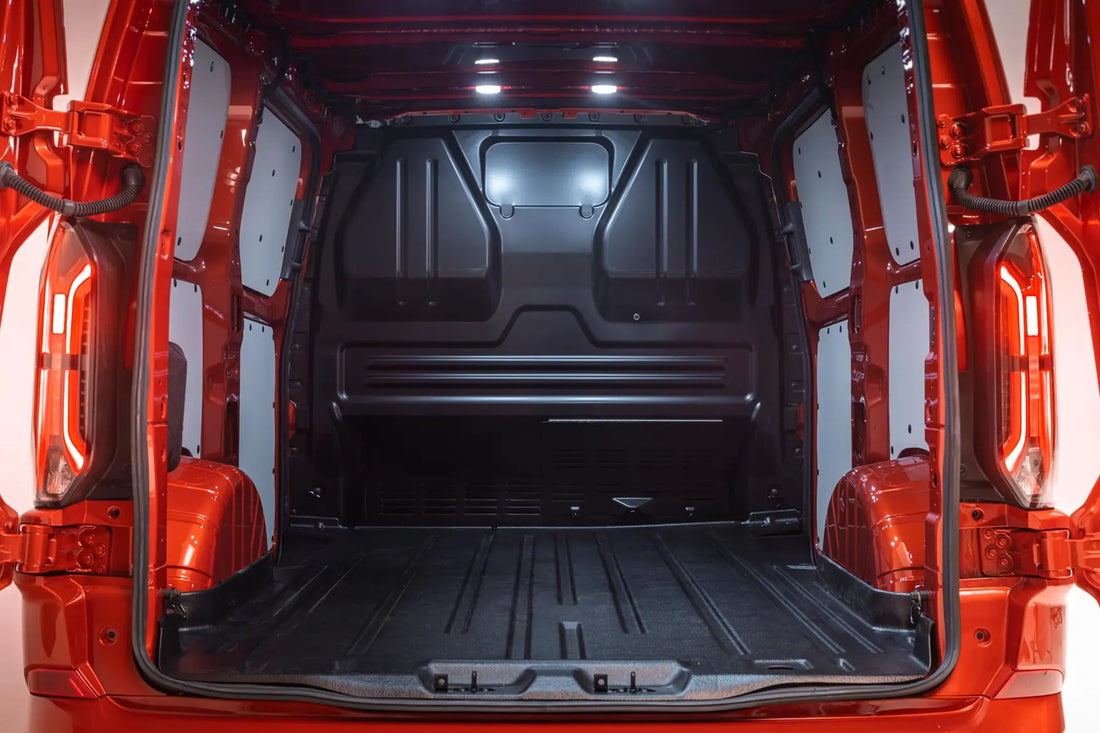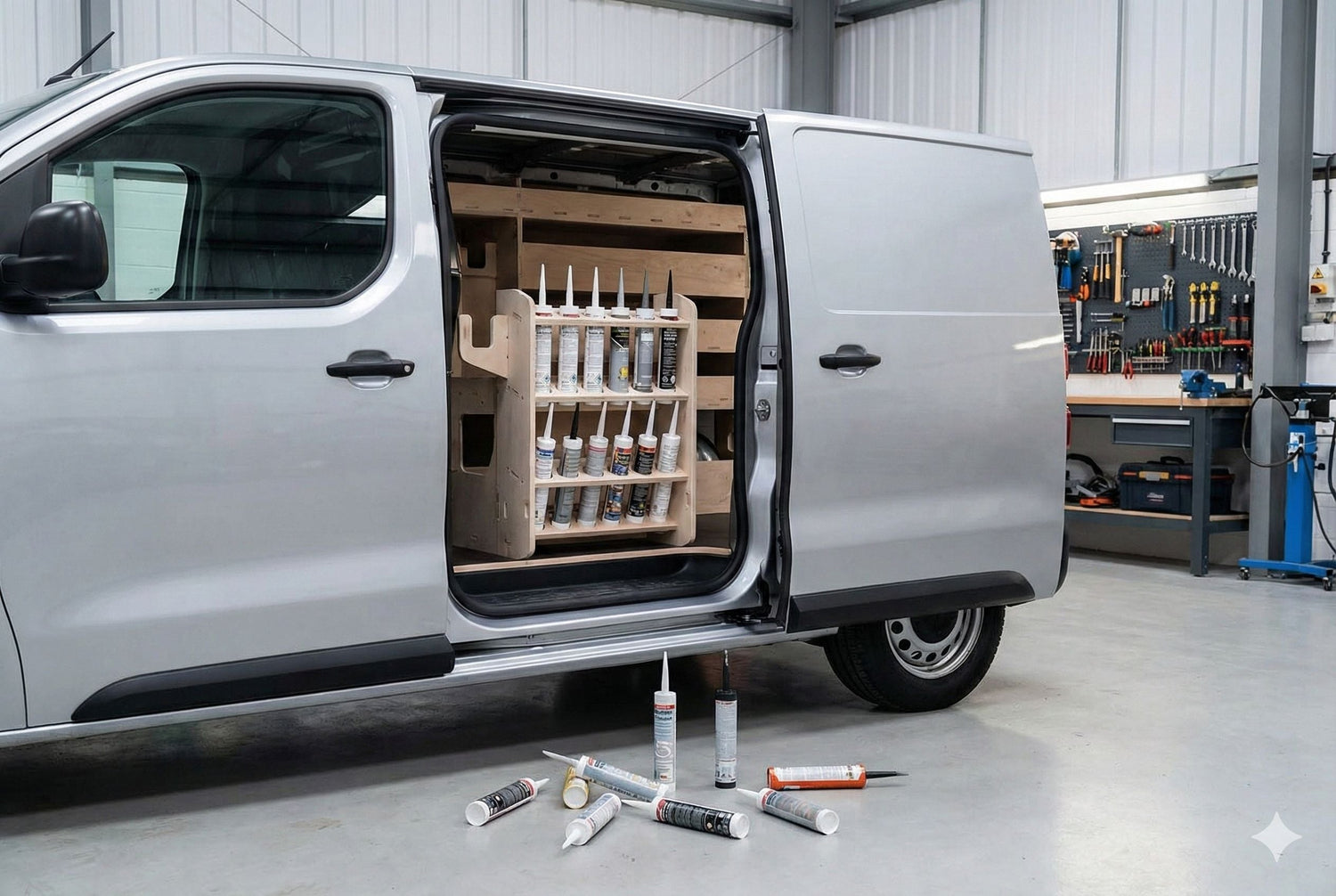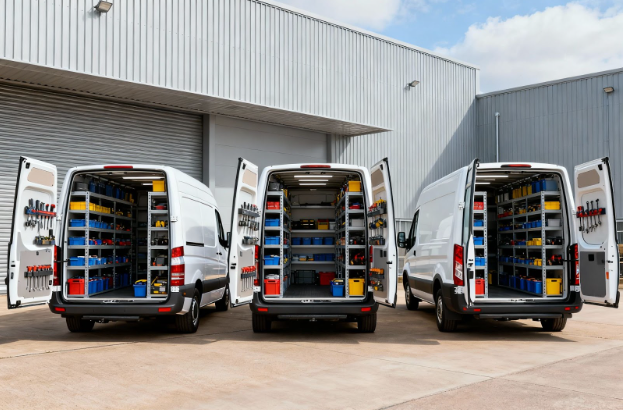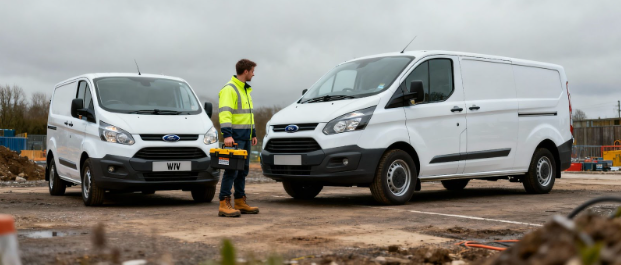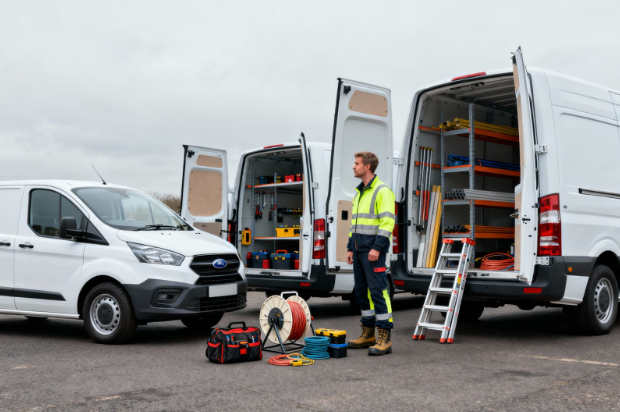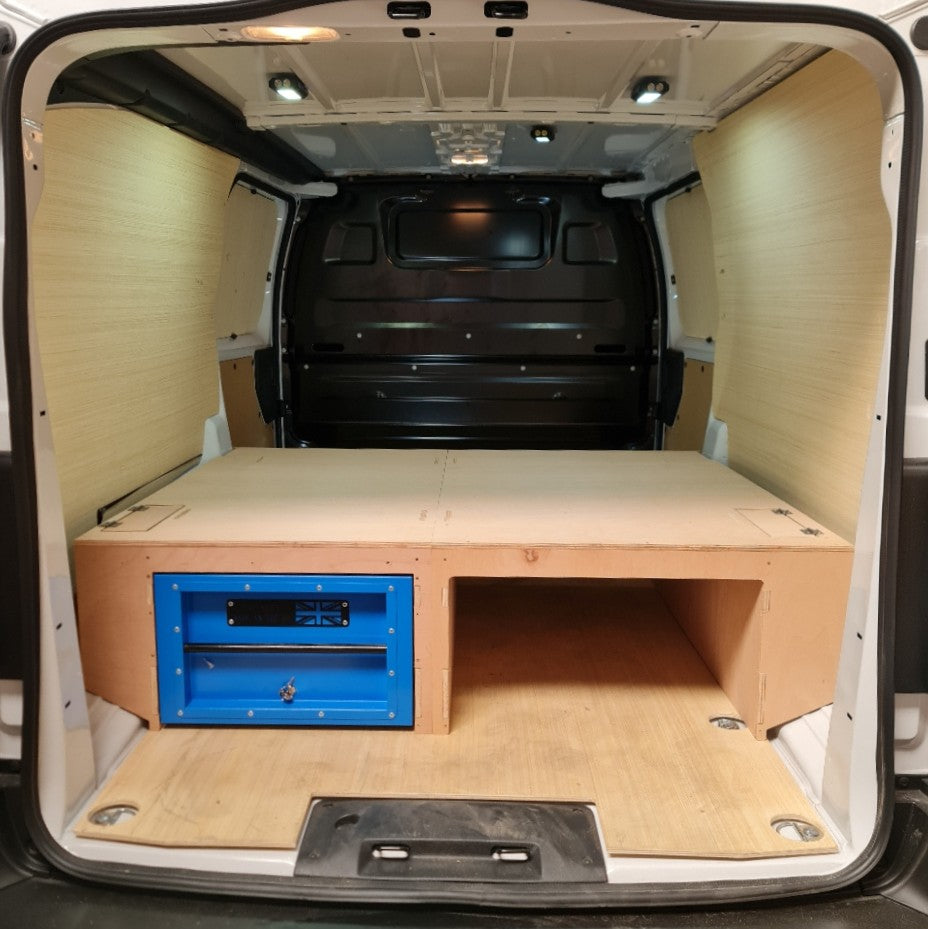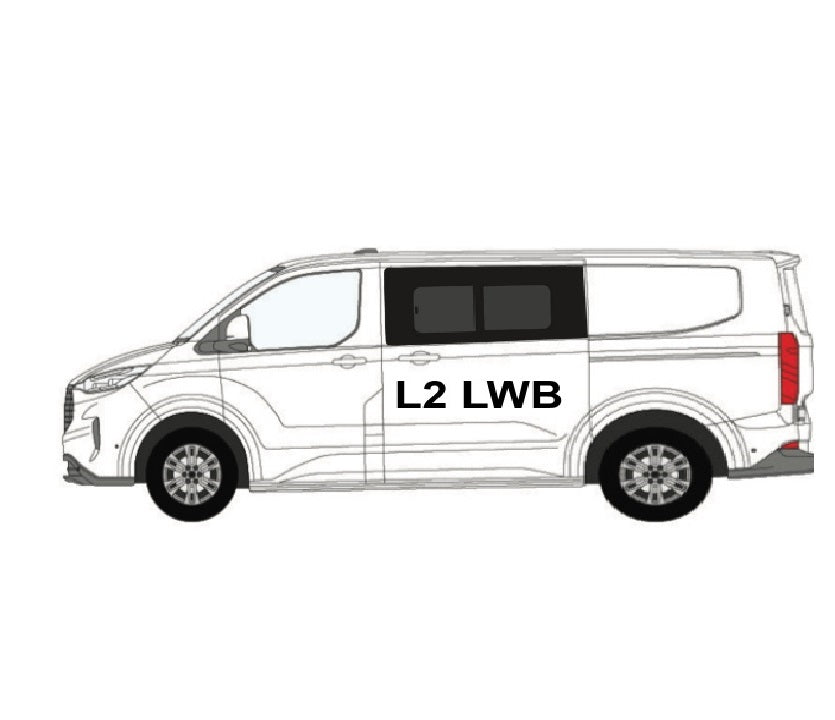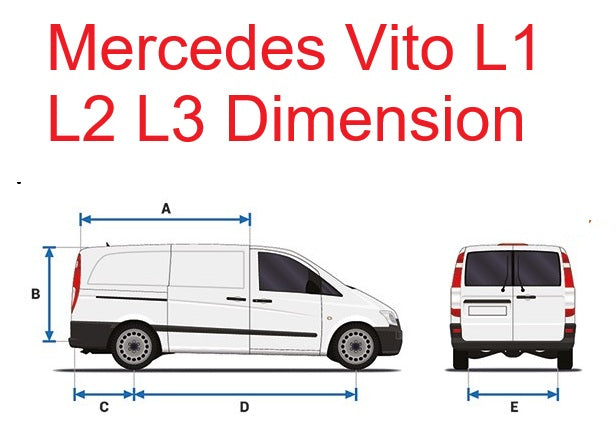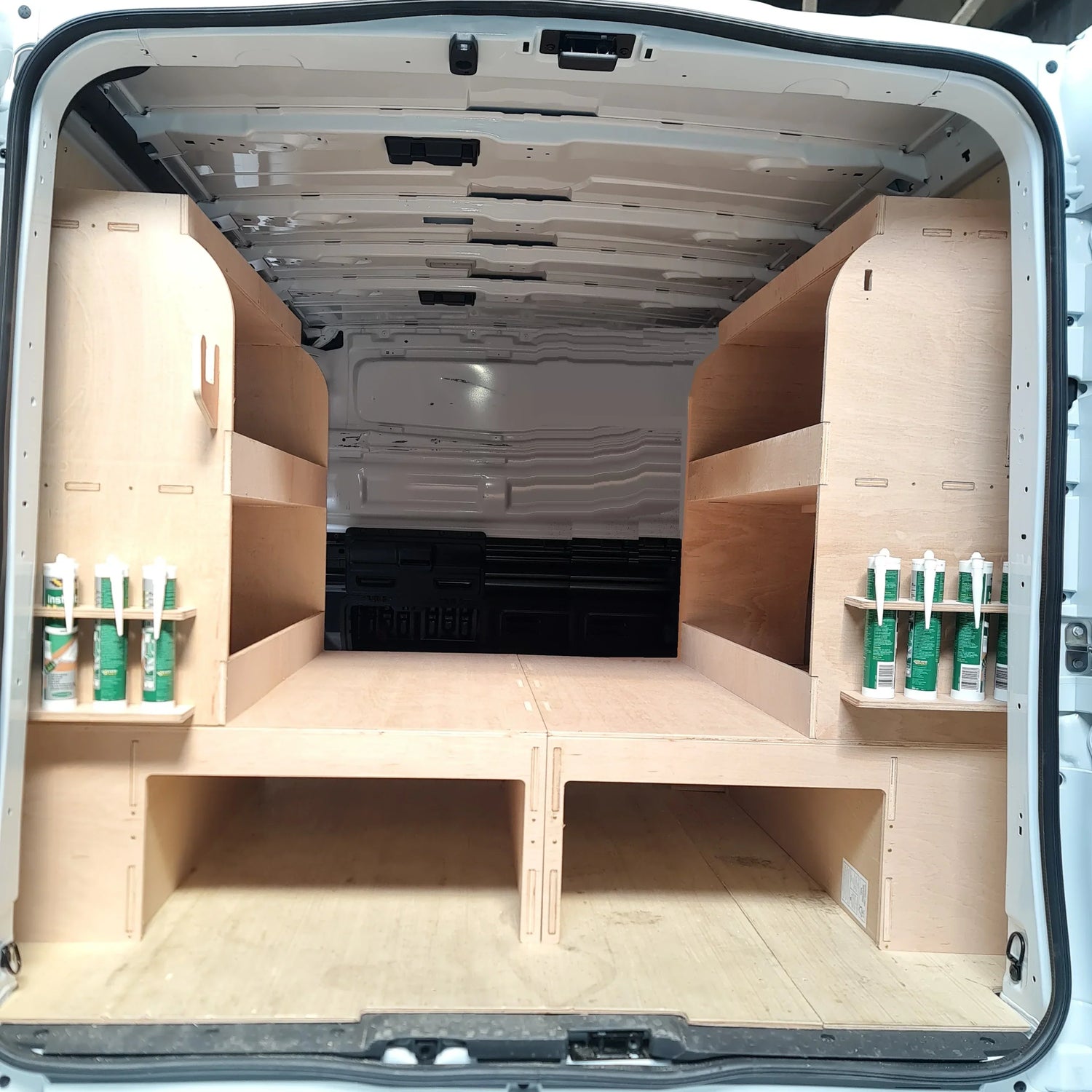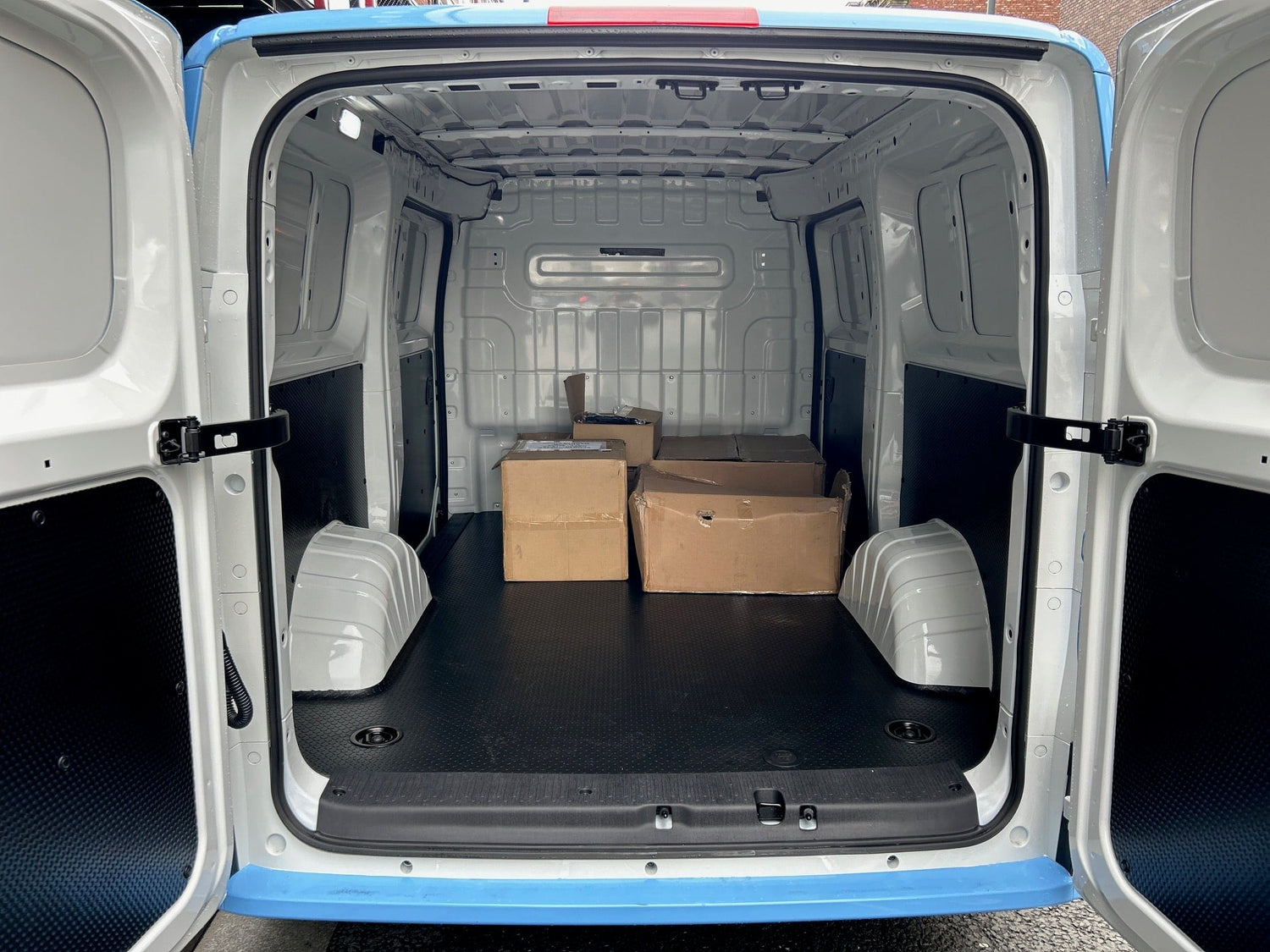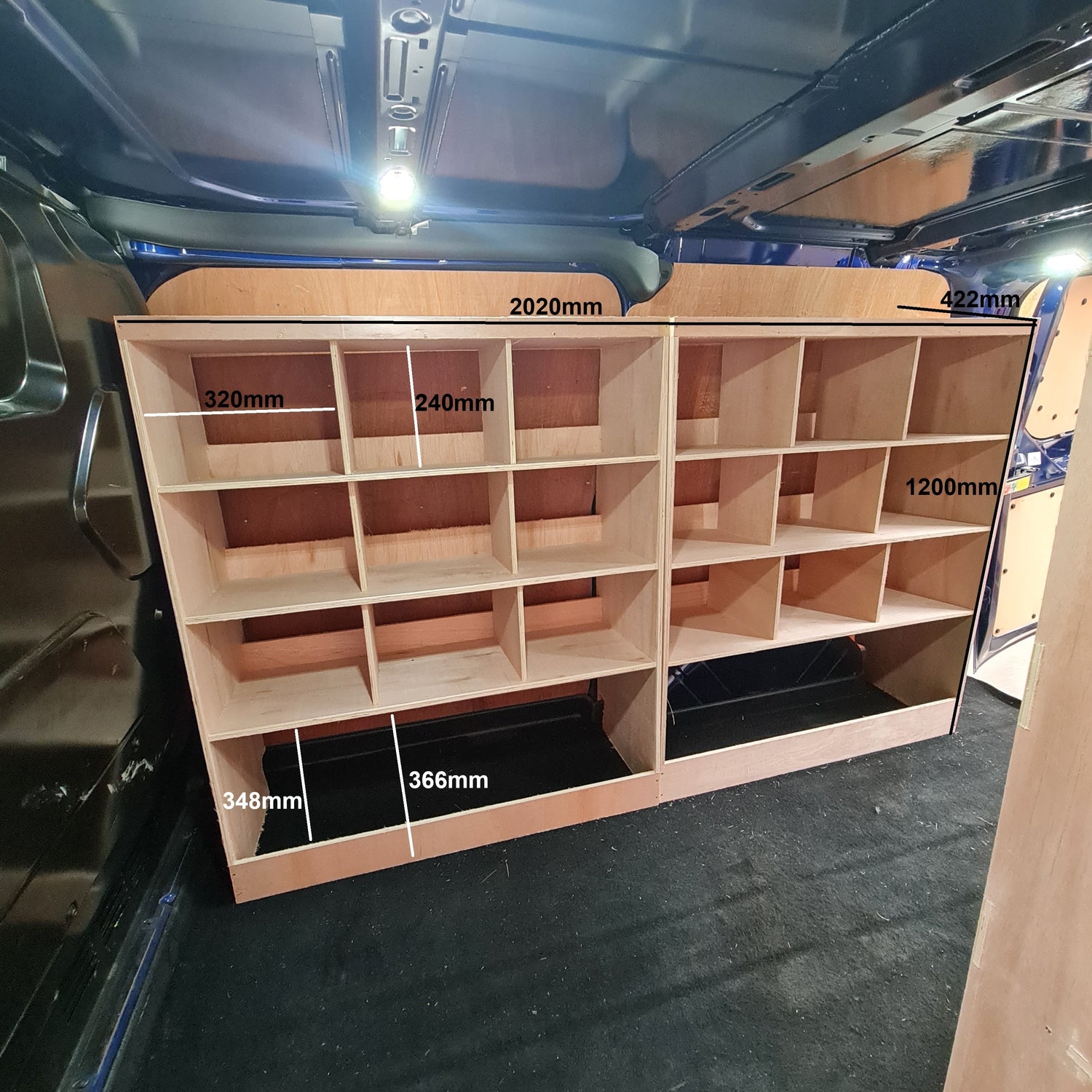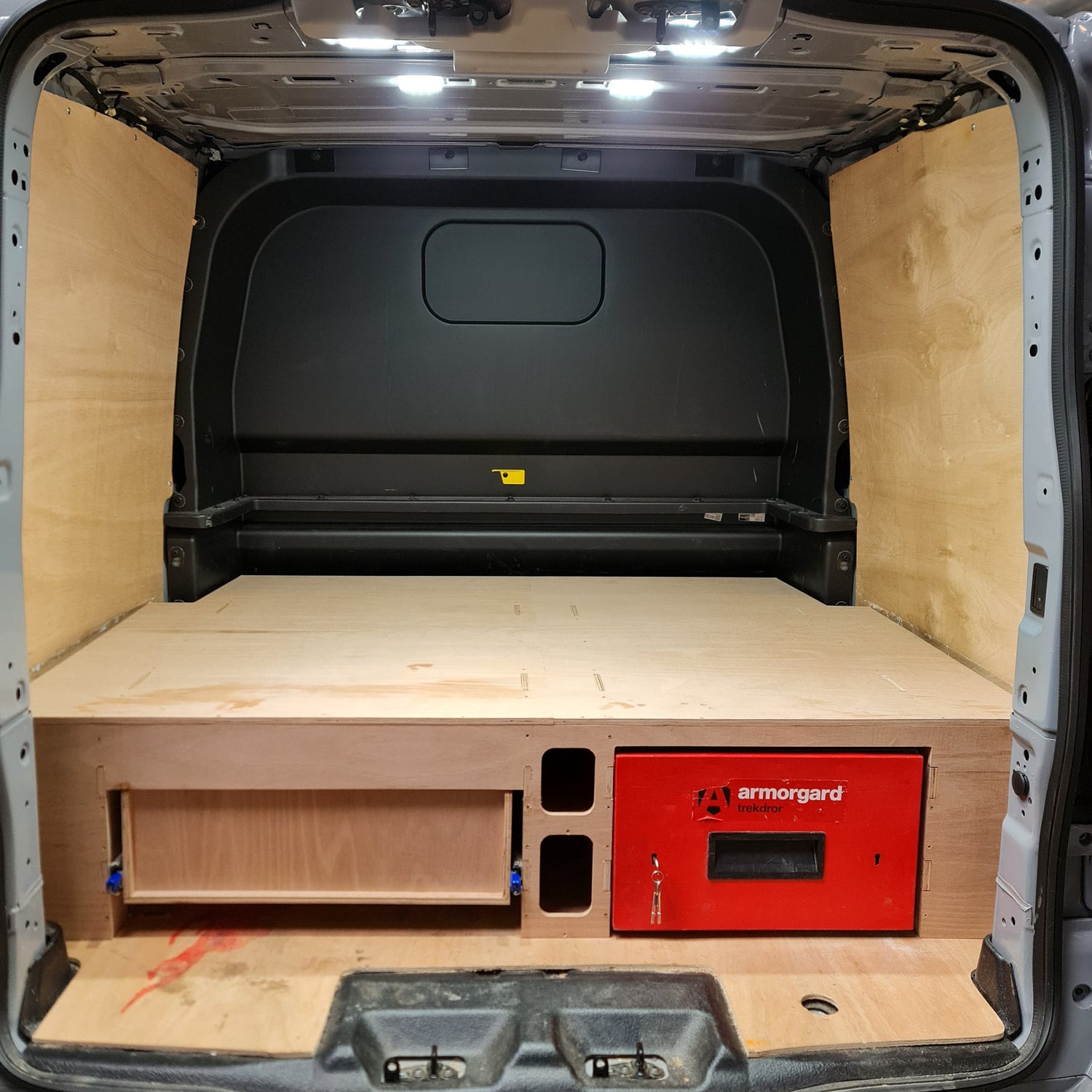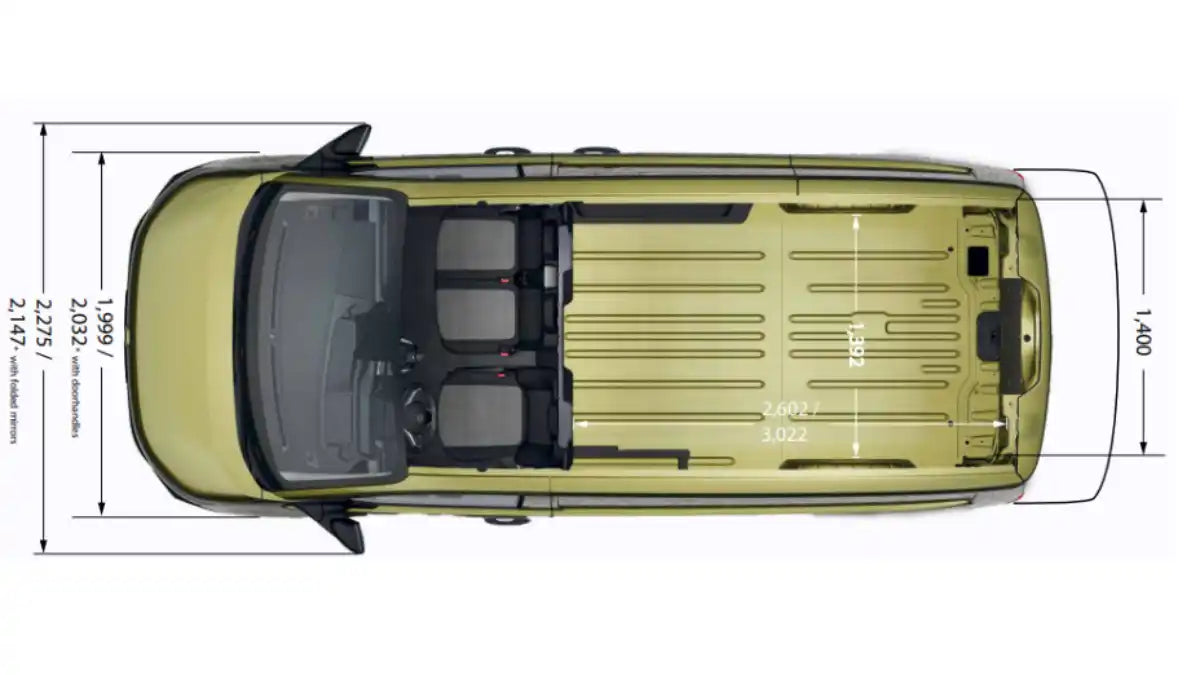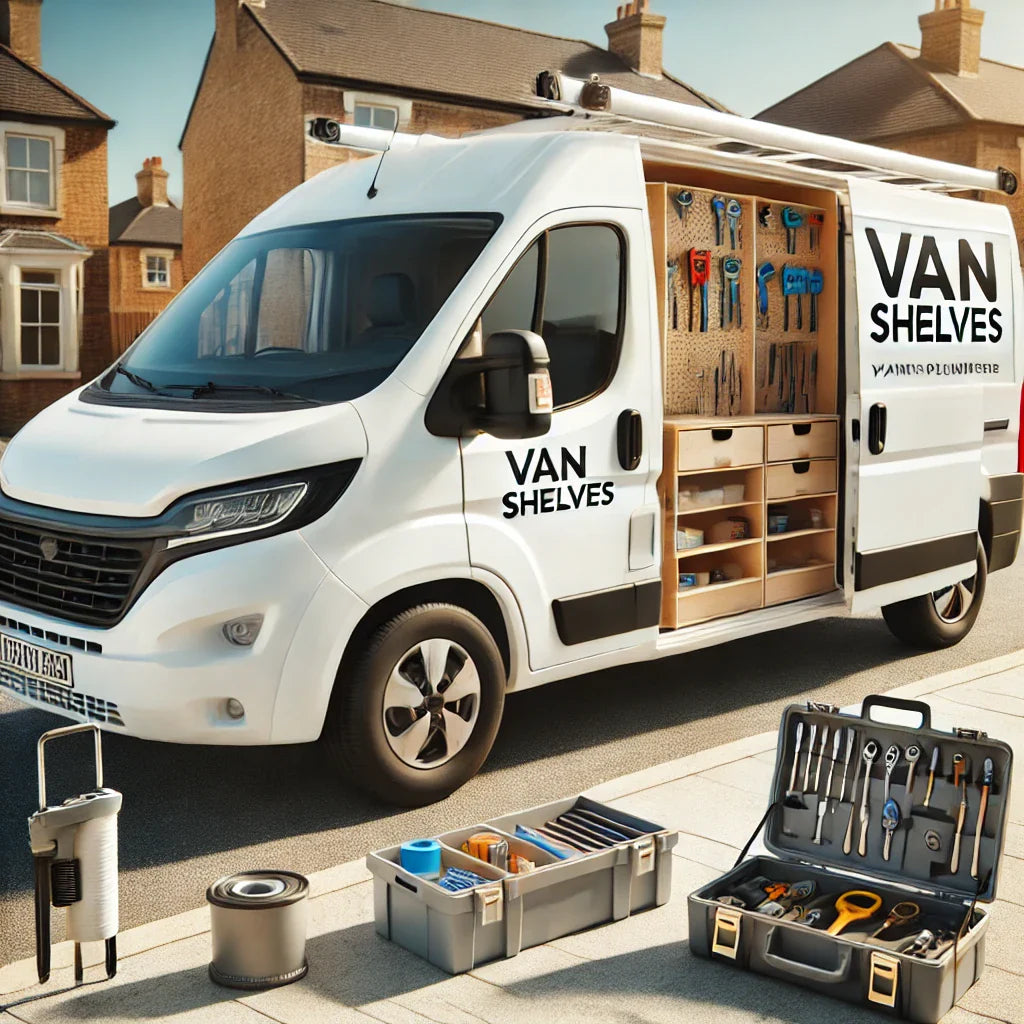Key Takeaways
-
Load length: 1.6m (L1) to 1.94m (L2) behind the bulkhead
-
Load height: 1,406mm (H1) or 1,778mm (H2) options
-
Maximum width: 1,777mm (1,392mm between wheel arches)
-
Payload capacity: 739kg to 1,115kg depending on model
-
Seating: 6 passengers plus cargo space
-
Key feature: Fixed bulkhead separating passengers from cargo
-
Ideal for: Teams needing transport plus equipment storage
For professional van shelving solutions designed for your Transit Custom Double Cab, visit our Ford collection.
Understanding the Ford Transit Custom Double Cab
The Ford Transit Custom Double Cab (also known as DCIV - Double Cab-in-Van) represents the perfect balance between passenger comfort and cargo capability. As businesses increasingly need vehicles that can transport both crew and equipment, understanding the exact load space dimensions becomes crucial for making informed purchasing decisions.
Unlike the standard panel van, the Double Cab variant sacrifices some cargo space to accommodate a second row of seating, creating a versatile commercial vehicle that serves dual purposes. Built on the same platform as the UK's best-selling commercial vehicle, the Double Cab maintains the Transit Custom's renowned reliability while offering unique functionality for trades that work in teams.
What Makes the Double Cab Different?
The Trade-Off: Passengers vs. Cargo
The Ford Transit Custom Double Cab features a fixed metal bulkhead that separates the passenger compartment from the cargo area. This design provides:
-
Safety: Protects passengers from shifting cargo
-
Comfort: Reduces noise and maintains cabin temperature
-
Security: Creates a lockable cargo compartment
-
Compliance: Meets commercial vehicle safety regulations
The second row adds three individual seats, bringing total passenger capacity to six, making it ideal for construction crews, maintenance teams, and service businesses that need to transport workers and their tools together.
Complete Load Space Dimensions
L1 (Short Wheelbase) Double Cab Dimensions
The compact L1 Double Cab offers:
-
Load length: 1,604mm at floor level
-
Load height: 1,406mm (H1 standard roof)
-
Load width: 1,777mm maximum
-
Width between wheel arches: 1,392mm
-
Load volume: Approximately 2.5m³
-
Rear door aperture: 1,314mm (H) x 1,400mm (W)
L2 (Long Wheelbase) Double Cab Dimensions
The extended L2 variant provides additional cargo room:
-
Load length: 1,872-1,944mm (varies by measurement point)
-
Load height: 1,406mm (H1) or 1,778mm (H2)
-
Load width: 1,777mm maximum
-
Width between wheel arches: 1,392mm
-
Load volume: Approximately 3.5m³ (H1) or 4.5m³ (H2)
-
Rear door aperture: 1,314mm (H) x 1,400mm (W)
Understanding Load Length Variations
Load length measurements can vary depending on where they're taken:
-
Floor level: Maximum length due to bulkhead shape
-
Mid-height (600mm): Slightly reduced due to bulkhead contour
-
Upper level (1,200mm): "Usable" length as specified by Ford
These variations typically differ by 50-100mm, so always measure at your typical loading height.
External Dimensions and Access
Overall Vehicle Dimensions
L1 Double Cab:
-
Overall length: 4,972mm
-
Overall width: 1,986mm (2,272mm with mirrors)
-
Overall height: 1,964mm (H1)
L2 Double Cab:
-
Overall length: 5,339mm
-
Overall width: 1,986mm (2,272mm with mirrors)
-
Overall height: 1,975mm (H1) or 2,347mm (H2)
Loading Access Features
The Double Cab maintains excellent accessibility:
-
Rear doors: 180° opening angle
-
Side sliding door: Standard on nearside (optional offside)
-
Lower step-in height: New for 2024 model
-
Optional powered sliding door: With hands-free operation
Payload and Weight Specifications
Payload Capacity by Model
The Double Cab's payload varies by configuration:
L1 Double Cab:
-
Ford Transit Connect DCIV: 738-739kg
-
Transit Custom 280 DCIV: 800-850kg
L2 Double Cab:
-
Transit Custom 300 DCIV: 1,109-1,115kg
-
Sport Double Cab: 854kg (due to additional features)
Gross Vehicle Weight (GVW)
-
280 models: 2,800kg GVW
-
300 models: 3,000kg GVW
-
320 models: 3,200kg GVW
Towing Capacity
All Double Cab variants maintain:
-
Braked towing: 2,500kg
-
Unbraked towing: 750kg
Practical Loading Scenarios
What Fits in a Double Cab?
Understanding real-world capacity helps plan your needs:
Tools and Equipment:
-
Power tools and hand tools in cases
-
Small to medium ladders (up to 2m)
-
Pipe and conduit (diagonal loading possible)
-
Tool boxes and storage systems
Materials:
-
Sheet materials must be cut (won't fit 8×4 sheets)
-
Bags of cement, plaster, or aggregates
-
Paint, chemicals in secure containers
-
Spare parts and consumables
Limitations:
-
Cannot accommodate Euro pallets
-
Full-size appliances challenging
-
Long materials require roof bars
To maximize your limited cargo space, explore VanShelves.co.uk for custom shelving solutions.
Comparing Double Cab to Panel Van
Space Comparison
Panel Van Advantages:
-
L1: 2,554mm load length vs 1,604mm
-
L2: 2,921mm load length vs 1,944mm
-
50-60% more cargo volume
-
Higher payload capacity
Double Cab Advantages:
-
Carries 6 people legally and safely
-
Eliminates need for separate crew vehicle
-
Better security with locked cargo area
-
More comfortable for long journeys
When to Choose Double Cab
The Double Cab excels for:
-
Construction teams of 3-6 workers
-
Service businesses with crew rotation
-
Emergency response teams
-
Mobile maintenance units
-
Businesses transitioning from pickup trucks
Configuration Options and Trim Levels
Available Trim Levels (2024-2025)
Trend Double Cab:
-
10-inch touchscreen with SYNC 4
-
Air conditioning
-
Rear parking sensors
-
Cruise control
-
Power windows and mirrors
Limited Double Cab:
-
All Trend features plus:
-
Leather steering wheel
-
Premium seat trim
-
Front fog lights
-
Additional storage solutions
Sport Double Cab (NEW):
-
Unique body kit and graphics
-
17-inch alloy wheels
-
Sport-tuned suspension
-
Enhanced interior trim
Engine Options
All Double Cab variants use the 2.0L EcoBlue diesel:
-
105PS (77kW)
-
130PS (96kW) - Most popular
-
170PS (125kW) - Sport only
-
Optional 8-speed automatic
Smart Features for Crew Comfort
Passenger Area Amenities
The second row provides:
-
Three individual seats with headrests
-
Under-seat storage compartments
-
Cup holders and door pockets
-
ISOFIX points for child seats
-
Heating and ventilation
Driver Conveniences
-
Fold-down table from middle seat
-
Multiple USB charging points
-
12V power outlets front and rear
-
Overhead storage shelf
-
Document holders
Making the Most of Limited Space
Organization Tips
-
Vertical Storage: Use full 1,406mm height
-
Modular Systems: Stackable boxes and cases
-
Wall Mounting: Brackets for tools and equipment
-
Under-Floor: Hidden storage solutions
-
Roof Bars: For oversized items
Professional Racking Solutions
Custom racking maximizes every millimeter:
-
Side-mounted shelving units
-
Drawer systems for small parts
-
Secure tool storage
-
Materials bins and dividers
Frequently Asked Questions
How much smaller is the Double Cab cargo area compared to a panel van?
The Double Cab sacrifices approximately 950mm of load length compared to equivalent panel van models. This reduces cargo volume by about 50-60%, from 5.3m³ to 2.5m³ in L1 models.
Can I fit a Euro pallet in a Transit Custom Double Cab?
No, the maximum load length of 1.94m (L2) is insufficient for a standard Euro pallet (1,200mm x 800mm) to fit lengthwise. The width between wheel arches (1,392mm) allows diagonal placement but length remains limiting.
What's the actual usable load length?
Usable load length varies by height: floor level offers maximum length (1.6-1.9m), while mid-height measurements are typically 50-100mm less due to bulkhead shape. Always measure at your typical loading height.
Is the high roof (H2) available on Double Cab models?
Yes, but only on L2 (long wheelbase) variants. The H2 roof adds 372mm of internal height, increasing load capacity from 3.5m³ to approximately 4.5m³.
What's the payload difference between Double Cab and panel van?
Double Cab models typically have 200-400kg less payload capacity due to the weight of additional seats and structural reinforcement. L2 models offer the best payload at around 1,100kg.
Can I remove the second row seats?
No, the Double Cab features a fixed bulkhead and permanent second row installation. For removable seats, consider the Kombi variant, though it lacks the secure bulkhead separation.
2024 Updates and Sport Variant
New for 2024
The latest model introduces:
-
Lower side door entry step
-
Powered sliding door option
-
Enhanced SYNC 4 infotainment
-
Digital instrument cluster (Limited)
-
Improved safety features
Sport Double Cab Specifications
Launching Q4 2024:
-
Exclusive Agate Black paint
-
Sport body kit and decals
-
170PS engine only
-
8-speed automatic standard
-
Reduced payload (854kg) due to equipment
Conclusion: Is the Double Cab Right for You?
The Ford Transit Custom Double Cab represents an intelligent compromise between passenger transport and cargo capability. With load lengths ranging from 1.6m to 1.94m and the ability to carry six workers safely, it's ideal for businesses that value crew comfort without completely sacrificing cargo space.
While you'll lose significant storage compared to panel vans, the Double Cab eliminates the need for separate crew transport, potentially saving money and improving efficiency. The key is understanding your specific needs: if you regularly transport 4-6 workers plus their essential equipment, the Double Cab could be your perfect solution.
Ready to maximize your Transit Custom Double Cab's limited cargo space? Visit VanShelves.co.uk for professional shelving solutions, and explore our complete Ford collection designed specifically for Transit Custom dimensions.

